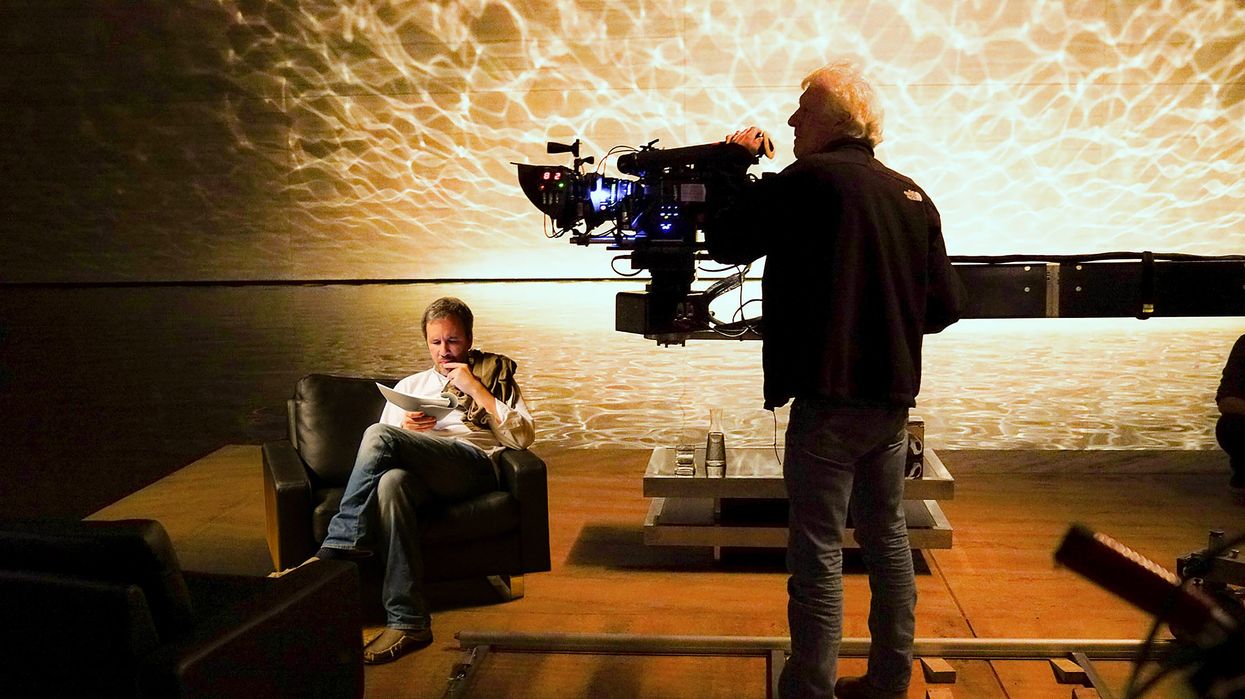Why is Roger Deakins Disappointed in Modern Filmmaking?
Roger Deakins is a visionary who has a preferred way to work. But Hollywood doesn't always abide.

We're all familiar with Roger Deakins, the greatest living cinematographer in the universe. We've heard him wax poetic about zoom lenses, camera techniques, and the process, but we have never really heard him complain.
Like all of us, Roger Deakins is only human. Also, he has a lot of opinions as to the way he'd like things to go.
So, when Roger Deakins mentions he has a problem with the way movies are made today, we listen.
Check out this amazing interview with the Oscar-winning DP from Collider and let's talk about some of his more interesting quotes after.
Why Do Modern Movies Frustrate Roger Deakins?
In this incredible interview, Deakins spends a ton of time going over his past works, but when it came to making movies today, he was critical of the process.
“Movies have become more about the aesthetic than the story and the content and what the film is trying to say. I find that pretty disappointing and pretty depressing.”
What's his main beef?
Well, while working on Blade Runner 2049, Deakins was constantly fighting with the studio and line producer over the kinds of equipment he needed to get the job done.
See, in modern movies, things are shot with multiple units. The DP goes with the first unit and shoots the main action, while the second unit will shoot pickup scenes all the way through complex set pieces.
On bigger tentpole movies, sometimes you'll have almost 9 units going.
That can get expensive.
But Roger Deakins, his wife, and longtime filmmaking collaborator James Ellis Deakins refuse to work that way.
Deakins likes to be in control of what's happening, as well as in charge of every setup.
Deakins elaborated, “They say, we need a list of the 4 or 5 camera crews you want because we have to get all these shots. I said, what 4 or 5? No! I thought that was strange to ask that on Blade Runner as we worked with Denis before, quite successfully, I felt. But it’s always like that with production. The bigger movies, if someone says, ‘Oh, we’ll put 6 cameras on it and get the scene.’ No thanks.”
And it's not just Blade Runner. They had trouble with Bond as well.
“We kept saying no, no, we don’t need that. And the line producer didn’t believe us,” James Ellis said. “The same thing with Skyfall. They said, ‘Don’t you need 5 or 6 cameras?’ I know they didn’t believe we could do it with one camera.”
The onset of all these cameras and crews makes for sloppy movies. There's no unity in the vision and in the way to tell the story. And that bugs Deakins.
So, how do we work better and smarter?
Only spend where you absolutely have to. Maybe it's better to work more days with fewer units, and cut costs elsewhere?
Especially when you have to cut all this footage together later.
But don't take my word for it. Listen to Deakins.
What's next? A Closer Look at Stabileye, One of the Stabilizers Roger Deakins Used on '1917'
Cinematographer Rodger Deakins won an Oscar for 1917, a film No Film School has covered extensively with a podcast, an interview with Deakins, through untold insights with key collaborators, and several behind-the-scenes features, including its cameras and hidden cuts.
Now learn about the tools he used to create his vision.











